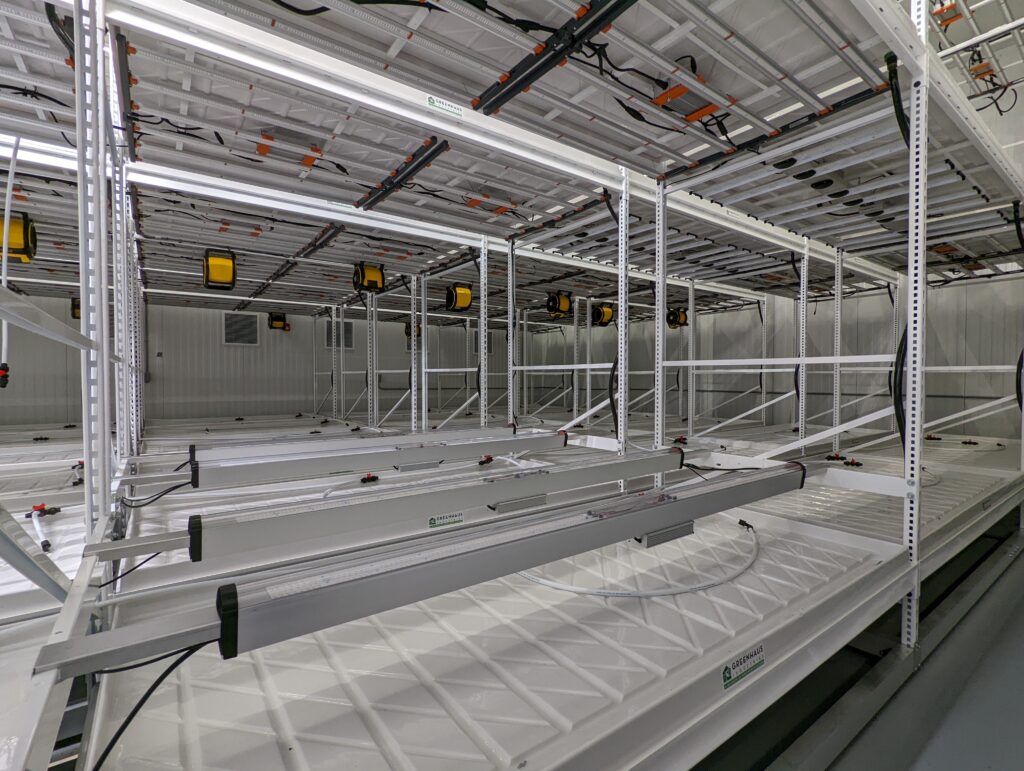
February 14, 2023
If you have a greenhouse or indoor growing facility, you’re probably thinking about using under-canopy grow lights, and you’re not alone. When it comes to providing lighting, there’s been a much greater interest among growers recently. They’re now asking, “How well will plants grow under regular LED lights?” Today’s growers are considering everything involved with growing plants with different lighting strategies, including:
- Overhead lighting
- Intra-canopy lighting
- Under canopy lighting
Growers continually seek to see their productivity increase by utilizing intra-canopy and under-canopy arrangements, which fight against self-shading. In fact, the reason we have controlled environments is to beat the yield we would get from simply relying upon the sunlight shining in open fields, right?
At JumpLights, we’re the experts at building under canopy grow lights, like our Catalyst model that’s proven to increase premium flower weight by as much as 60%. This concept was initially a tough change because there was inherent uncertainty about how plants would react to light from below. After all, plants are used to leaves; leaves have spent the past 500 million years adapting to sunlight shining down on them from the skies. What would these new lighting changes bring?
But then we saw the results, and it all started to make sense:
- We know how reflective plastic mulch bounces light upwards into plant canopies, thus increasing their yields.
- We know leaves are semi-transparent.
- Perhaps most importantly, now we see and understand how photons can go through plant tissue to drive photosynthesis. We’ve also seen how scattered diffused light improves its yields without increasing light intensity. These were simply the clues telling us that the dark sub-canopy of controlled environment agriculture can be lit for huge gains. So now, where there’s darkness, let the light shine.
Cannabis is a crop with a uniquely dark sub-canopy and tight crop spacing. It presents the perfect conditions for using efficient LEDs in a narrow body with an upward-facing form factor.
- Although the area under the canopy can use some much-needed light, the conditions in that region are more difficult for lights.
- There’s higher exposure to water, moisture, and soil.
- If you have less airflow, the light is more likely to be hit during loading or unloading. Then the form factor must remain small enough to fit between plants and diffuse light as much as possible.
That’s why any cannabis grower will want a light with a good environmental rating, such as UL wet location, a rugged light with protected electrical connections, and a light capable of regulating its own heat while also shining brightly along the widest angle possible.
You may find yourself asking, “Can plants grow under any LED light?” Yes, but successfully implementing this process can be like walking a balance beam. That’s because warehouse-type growing environments may have constraints on their HVAC or power sources, but those challenges can be overcome by using more efficient LED light to replace your top lighting. Choosing exactly how much light to put on top of the canopy vs how much light to use underneath can be a bit of a balancing act.
In previous years, cannabis growers were putting 300 to 600 µmol∙m-2∙s-1. However, they are now actually seeing an even greater increase in yields with values around 700–1,000 µmol∙m-2∙s-1. In fact, in publications and in practice, we have seen increasing yields up to 1,500 µmol∙m-2∙s-1 from top-canopy lighting.
Still, this does beg the question:
- “How much light should be put on top of the canopy?”
- “How much light should we have when using under-canopy grow lights?”
Through this enlightening journey, we have learned that under-canopy lighting offers its users a huge value driver for their cannabis operations.
- Since the underside of the canopy is dark, increasing light in that area does greatly increase the shaded leaves’ efficiency.
- As the canopy’s top will already be well-developed from sunlight or top lighting, additional photons underneath can be more productive than additional photons from above. This also brings more utility to the sub-canopy flowers that are otherwise underdeveloped.
- Beneath the canopy, we’ve seen huge productivity increases by adding around 200–500 µmol∙m-2∙s-1. While these levels are lower than those on top of the canopy, they effectively utilize an otherwise unused area.
- Bringing under-canopy lighting to your operation may even allow you to double your canopy footprint; there was already a surface area of the canopy above, and now with under-canopy lights, the same surface area of the canopy can also be even more productive underneath.
This is an under-canopy revolution, and it will be fascinating to watch how it evolves as controlled environments are optimized.
We may see many new opportunities for under-canopy lighting in greenhouses, as supplemental lighting without top or under-canopy lighting is used when root temperatures are low.
Who knows? In the future, growers could see increased yield from other crops with sub-canopies!
We’re proud to be part of a forward-moving future ripe with opportunities for growers to utilize efficient LEDs to be more productive in their space! Check out the video below where our Marketing & Strategy leader Aaron Lichtig shares how you can tell if an under canopy light is high quality.




